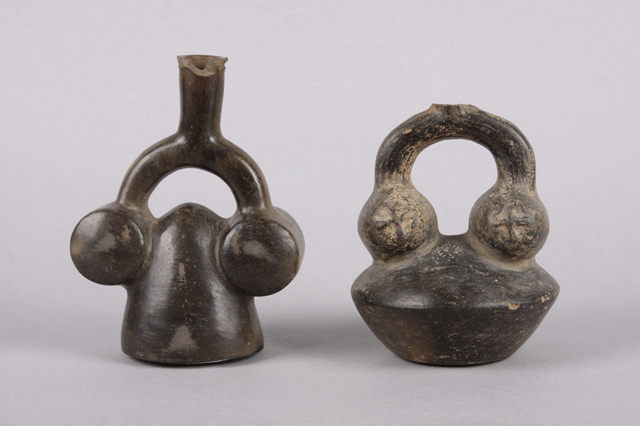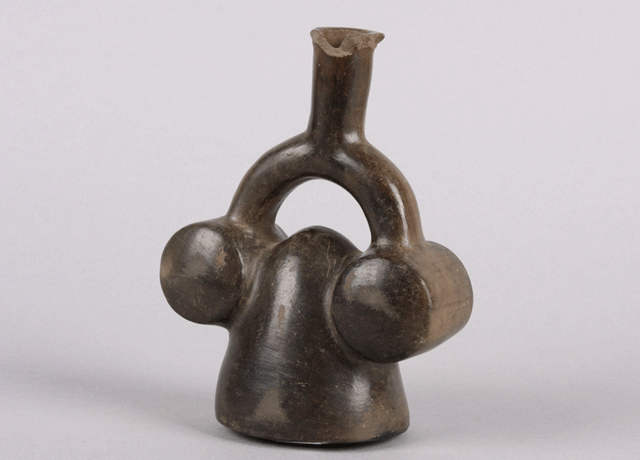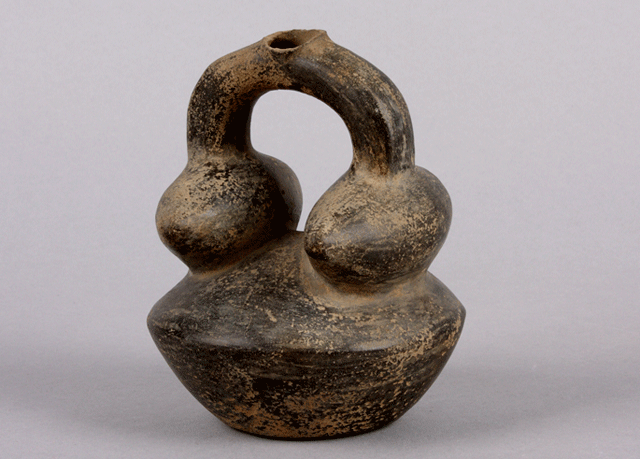
Photograph by B. Bernard

Photograph by B. Bernard
The demand for Precolumbian artifacts has led to a prosperous art-faking
industry. No collector or museum is immune. Pottery fakes are always
plentiful and some are made with great skill. To increase the fake
object's market value, forgers add artificial patina, scratches, and other
signs of age and use. The two stirrup-spout jars shown here are probably
not fakes but because they come from the same collection as a group of three
fake Peruvian artifacts,
scholars should trust nothing that the collector
was told about the objects (and only part of what can be seen). For art
historians, the danger lies in the fact that when a fake is exhibited as
genuine, it becomes one of the pieces by which other works are judged.

66.58.6, mold-made stirrup-spout jar
Late Chimú period (A.D. 1350–1470) to Chimú-Inka
period (A.D. 1470–1532)
Probably Zaña River valley, north coast of Peru
Gift of Mrs. Leo F. Mermes
Photograph by B. Bernard

66.58.4, mold-made stirrup-spout jar
Middle Chimú (A.D. 1200–1350) to Late Chimu
(A.D. 1350–1470) period
Probably Lambayeque River Valley, north coast of Peru
Gift of Mrs. Leo F. Mermes
Photograph by B. Bernard
The upper example is 17 centimeters (6 1/2 inches) tall. The lower one
is 14 centimeters (5 1/2 inches) tall but would have been taller when
the entire spout was present.
To return to the thumbnail on the previous page, click here.
All content copyright © Maxwell Museum of Anthropology, University of New Mexico. High-resolution versions of photographs may be ordered from the Maxwell Museum's photo archives. Please make note of the catalogue numbers. For more information please visit the photo archives web page
Page last revised on November 9, 2011. Please report problems to toh@unm.edu